In Lore Explainer, we take a deep look at the lore behind our favorite games, movies, and books, and talk about the story behind them and sum up what you need to know and how you can find out more.
“How many Hours are in a day, when you don’t spend half of them watching Television? When is the last time any of us REALLY worked to get something that we wanted? How long has it been since any of us really NEEDED something that we WANTED?
The world we knew is gone.
The world of commerce and frivolous necessity has been replaced by a world of survival and responsibility.
An epidemic of apocalyptic proportions has swept the globe causing the dead to rise and feed on the living. In a matter of months society has crumbled – no government, no grocery stores, no mail delivery, no cable TV.
In a world ruled by the dead, we are forced to finally start living.”
-Quote from Michonne in Issue #193 of The Walking Dead
A World We Knew
The world of The Walking Dead froze in 2003. When the dead rose, society collapsed. No advancements in technology, infrastructure, or medicine was made. There was no internet like we know it nowadays, people’s mobile phones were still mainly foldable. The World would never see Pirates of the Caribbean 2. Tragic, really.
Beyond the alien spore theory and well, the undead, the world of TWD is doing its best to not be fantastical. There certainly are some stretches for narrative reasons, but overall the world tries to be realistic within its boundaries. The focus lies on survival in a world hostile to humanity and how that in turn makes humans hostile to one another.
[Editor’s Note: The Walking Dead ran from issues #1 to #193. In this article we’re going to cover material from all of those issues, as a spoiler warning. You can definitely pick up the trades or the current run of The Walking Dead Deluxe to catch up.]
The Known World
While the main story of The Walking Dead limits itself to the eastern coast of the US; multiple offshoot comics and novels have expanded on it in the canon comic book universe. We’ve seen a glimpse of Barcelona (TWD The Alien) and even parts of China (TWD Typhoon), as well as other parts of the USA in the Telltale video game series.
We begin the story from Cynthiana, through Atlanta, Woodbury and eventually end in Washington D.C. where we settle down. The world of The Walking Dead is at first glance, a bleak one, bustling cities now either abandoned or crowded by the dead, countryside farms scattered with the corpses of their cattle as well as the farmers. It does what many apocalypse stories do, it takes the familiar places we know and strips them of that familiarity. A hospital, a place of healing and recovery becoming a morgue to its inhabitants, a peaceful gated community in the suburbs being abandoned and empty. The world of TWD is as real as it is unreal, many places are obviously made up, but when our survivors make their way to Woodbury, it is a real world town, we know how many people lived there. The survivors of TWD take a huge road trip up the east coast of the US, stopping by real and fake places.
As people adjust to this new world, we see the rise of groups and communities that become more than the occasional raiders and the old game of war and politics begins anew. We introduced some of the main characters in a previous article, so here we will describe the major factions making up the world of TWD (and, naturally, the ones you’ll play in The Walking Dead: All Out War).
Woodbury
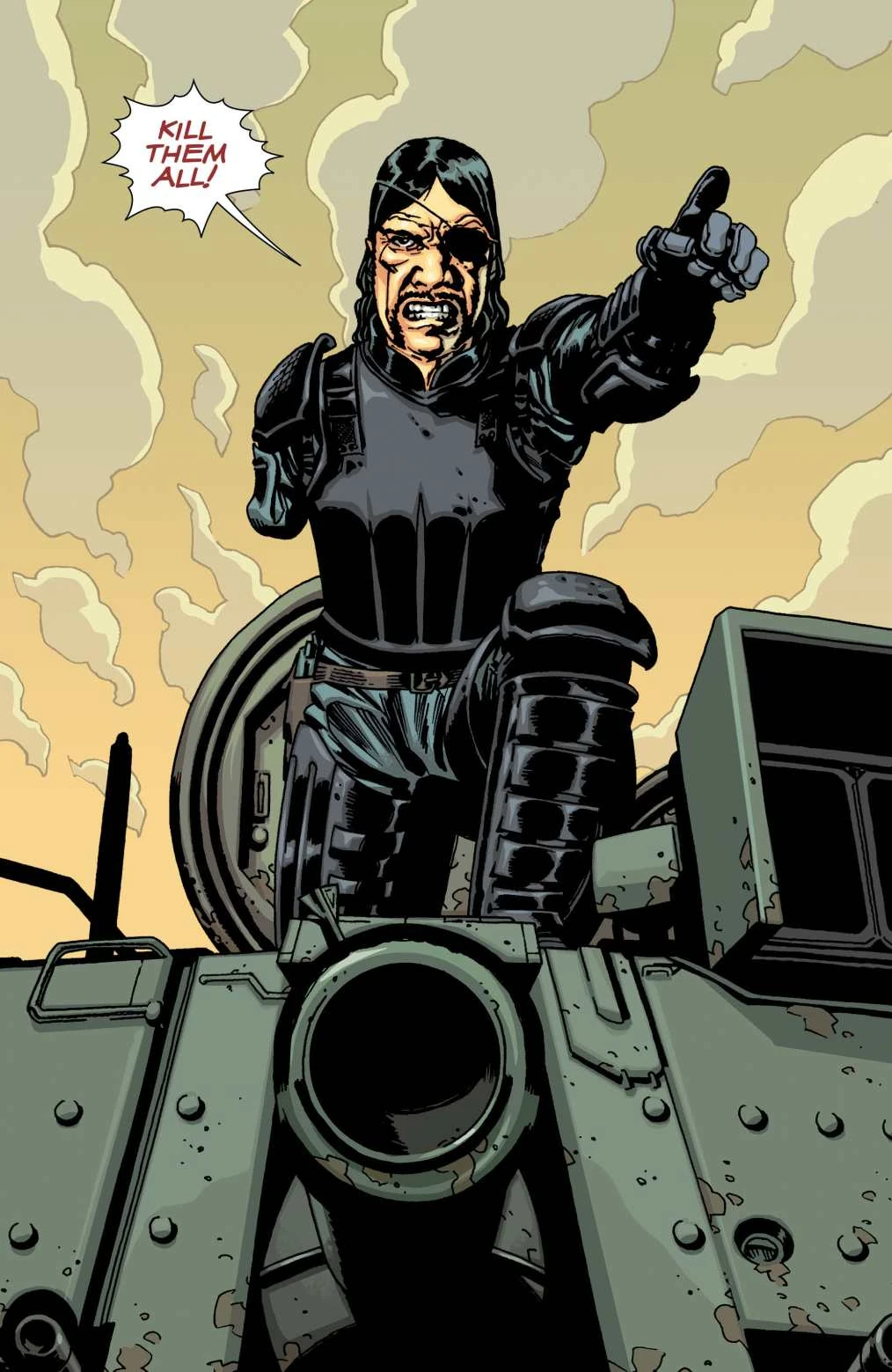
Woodbury is the first properly organized community we see. Run by the enigmatic ‘Governor’ Philip Blake (aka Brian), it seems to be a safe and well run community, providing shelter and food to everyone (seen when veteran and town drunk Bob gets told he doesn’t need to sleep on the streets). But as will be trend, the community is split between the armed forces and the civilians. The armed guard under the Governor ruthlessly plunder, murder and feed strangers to their arena Walkers. They are well-armed, equipped with many trucks, and have a large militia commanded by trained National Guardsmen. They even have a tank, a Bradley IFV (not technically a tank!).
They’re also privy and complacent to the Governor’s more horrific tendencies (SA). Meanwhile the civilians see their community as peaceful and prosperous, admiring the Governor for his and his men’s effort. It goes so far that they get convinced into attacking Rick and his groups after being manipulated by the Governor. The ‘Road to Woodbury’ novels expand further on the backstory of the Governor and some of the goings-on in the community. In the end, the Governor gets shot during the assault on the prison by one of his own people after they killed Lori and her baby Judith. [Editor’s Note: Lori actually killed her baby when she died and fell on Judith. Lori sucks!] It is implied that after the death of the Governor, Woodbury becomes a better and more welcoming community.
The Hunters

While not a community, these 6 people are methodical and capable enough to be a force in their own right. On their way to Washington D.C., Rick’s group starts noticing shadows stalking them in the forest. These are the Hunters, a group of people – among them former parents – who have adopted a sick philosophy. Being somewhat incapable (or really unlucky) at gathering supplies, their group eventually turned to cannibalism.
Their leader, Chris, justifies their decision to eat their own children by stating that a mother bear would also eat her young if she was starving; if she died, her cubs would too, but if she lived, she could make more. After turning to cannibalism, they decided to hunt the living, as it was easier than animals. They’d usually go for small groups or loners, but by the time they came across Rick’s group (10+ people), they were desperate and starving. While The Hunters are very skilled at stalking prey and remaining hidden, Rick’s group are very skilled as well.
They managed to capture Dale and eat his leg. But their overconfidence cost them dearly. Not only were they facing potential death from eating the then infected Dale, but they also got tracked down by Rick and some of his group. The murder of the Hunters is seen as the lowest point for many in Rick’s group as they enact their vengeance.
Alexandria Safezone
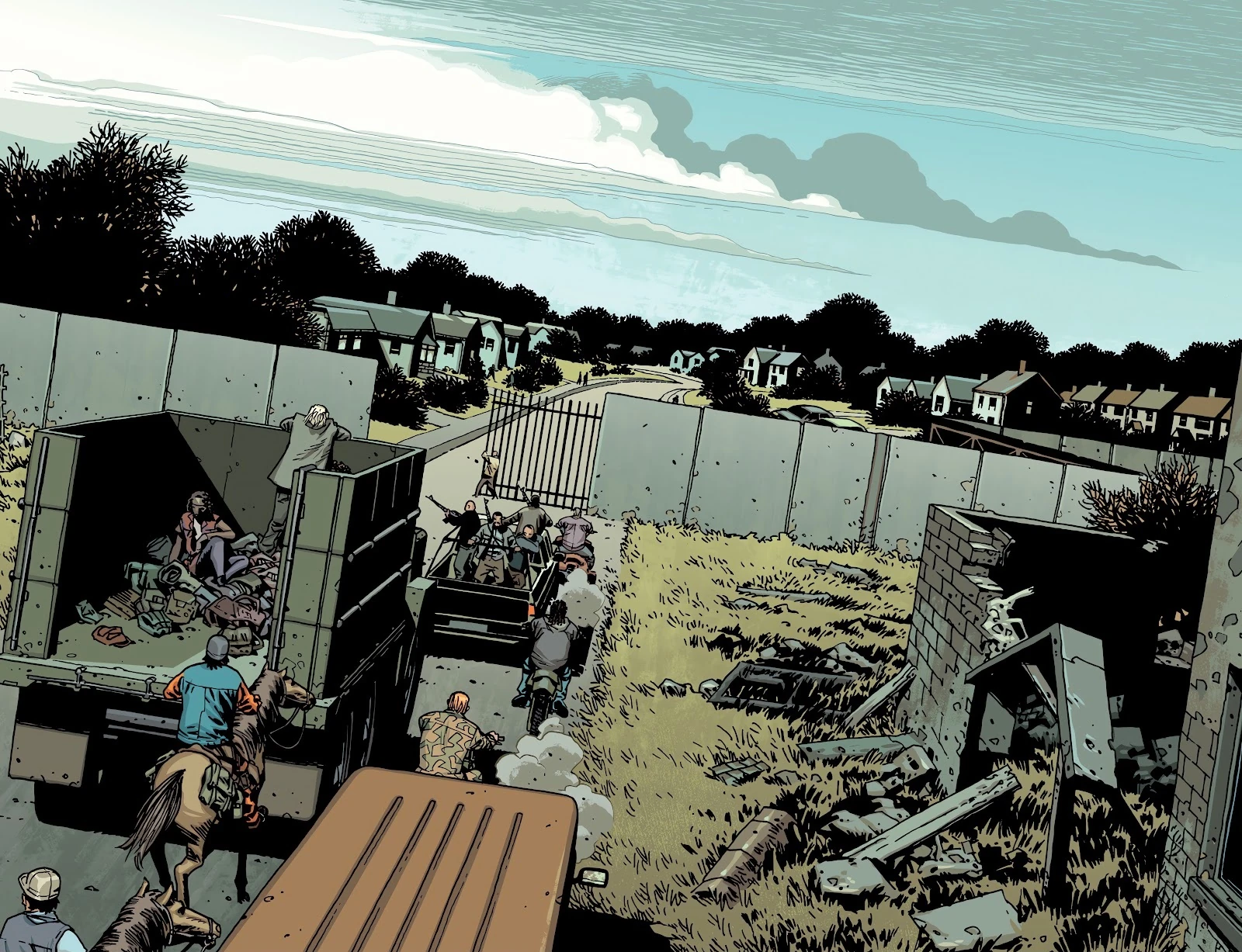
The Alexandria Safezone was a continuation-of-government plan. It was meant to be an area for politicians to survive in, giving the community access to electricity and water for far longer into the apocalypse. Originally discovered and founded by a man named Alexander Davidson, it was later taken over by Douglas Monroe when Davidson began abusing his power.
When Rick and his group join this community, they find the inhabitants relatively peaceful. Similar to how civilians lived in Woodbury, the people of Alexandria are originally rather naïve and comfortable. But when Rick confronts the community’s surgeon Pete Anderson for beating his wife and son, things escalate. Not helping is an attack by a group only known as the Scavengers [Editor’s Note: they’re the enemy in the original Mantic Walking Dead All Out War box set!]. Following that, the Community is overrun by a horde and barely makes it. Rising from the ashes, the community rebuilds under Rick.
They would eventually begin networking with other nearby communities and spearhead the war against the Saviors and the Whisperers. As things evolved, so did the style of government in Alexandria, eventually becoming more democratic, led by a council of specialists.
The Hilltop
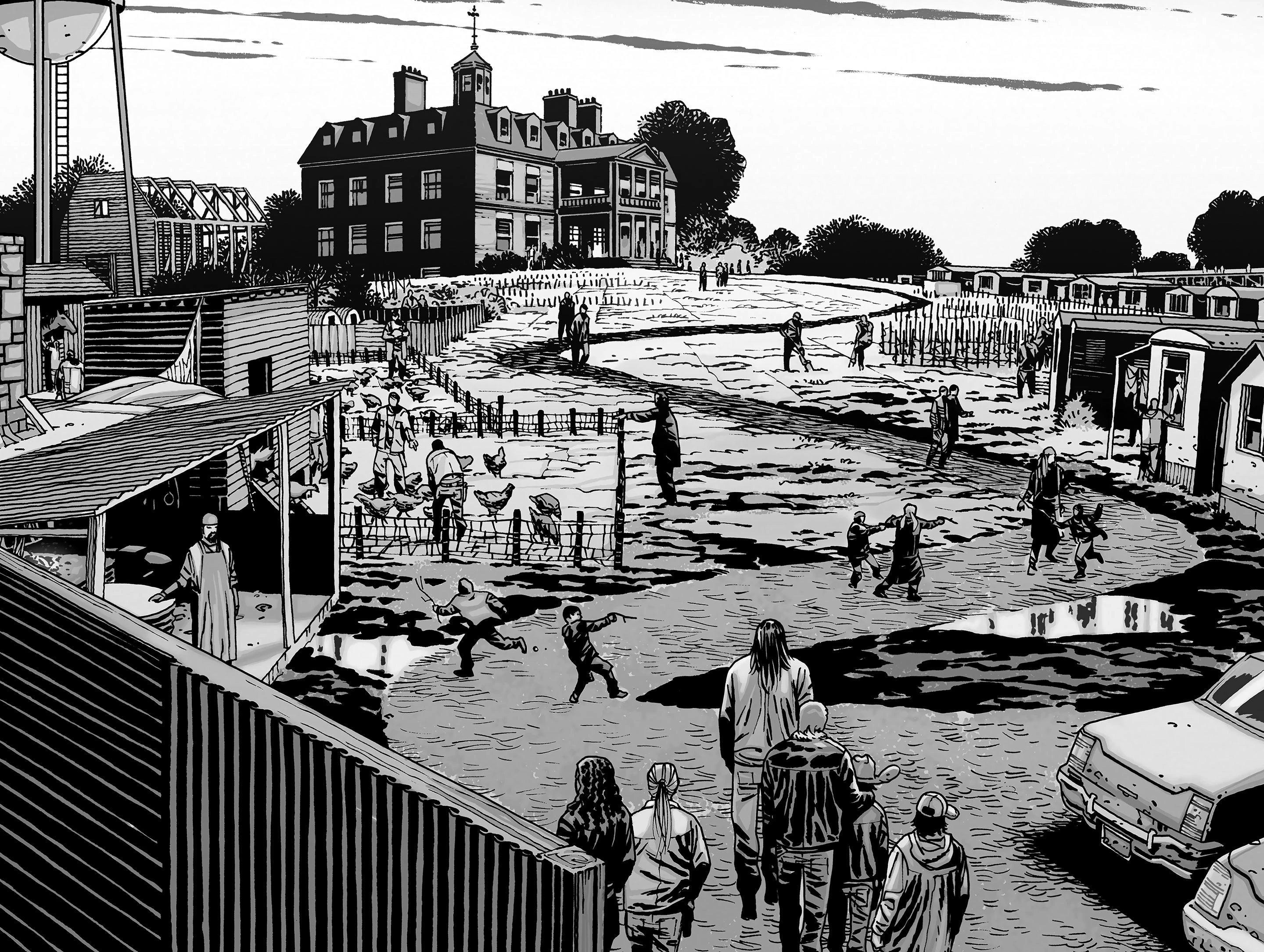
A community built mostly from scratch around the large Barrington house on a hill, Hilltop is one of the largest populations (200+) in the DC area, being a very self sustaining community. Having access to some horses, agriculture and even a smithy, they can make a lot of what they need for themselves.
However, due to their submission to the Saviors, they were without firearms. Their leader was originally Gregory, who ruled the community in a way to avoid harm, i.e. cowardice. Despite his apparent groveling and lickspittling, the Saviors would eventually send one of his own people to assassinate him. While the rest of the community eagerly took up arms against the Saviors, Gregory would remain a spineless coward.
Eventually leadership changes and Maggie Rhee takes over and hangs Gregory publicly after repeated attempts at her life. During the war with the Whisperers the community burns down entirely, but with help from the Kingdom, they rebuild.
The Saviors
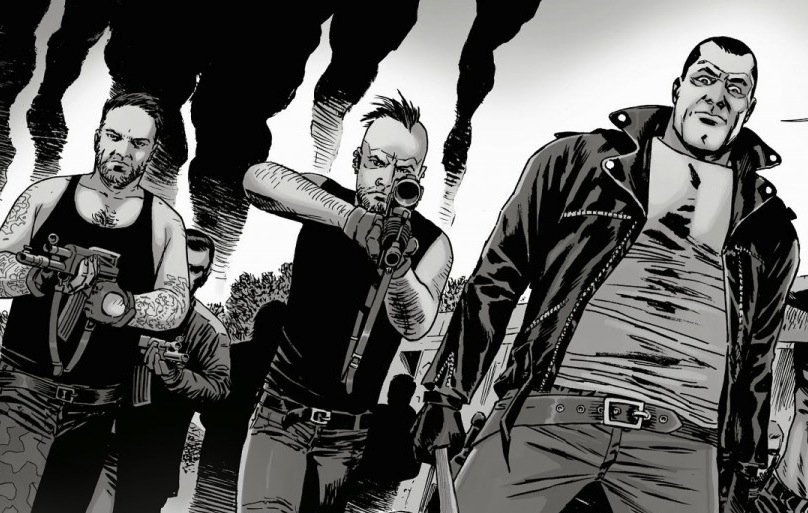
A Community similar to Woodbury with a civilian worker class and the more violent soldiers and enforcers. They are at one point the most well organized community, running multiple outposts and having a whole carpool at their disposal. Their numbers are great enough to enforce and subjugate three relatively big communities at one time. Lead by Negan, a mildly charismatic tyrant [Editor’s Note: and former gym teacher!], they claim to protect and save people, but are little more than a protection racket.
Their repeated aggressions and chicanery towards the communities eventually leads to an all out war [Editor’s Note: the titular one!]. The fact that they put up an intense fight only goes to show how well equipped and numerous the Saviors really are. But the thing holding it all together is Negan and he has made enemies within his own ranks. After being betrayed by one of his lieutnants and almost killed by Rick, the Saviors give up and the war is won by the communities.

The newly established order has all of the communities provide equally to a shared new world. But tensions and resentment still linger within the Saviors, and during a moment of weakness they attempt a coup in Alexandria which ultimately fails. In later comic issues it’s hinted at that they’re repentant and have accepted the new world wholeheartedly.
The Kingdom
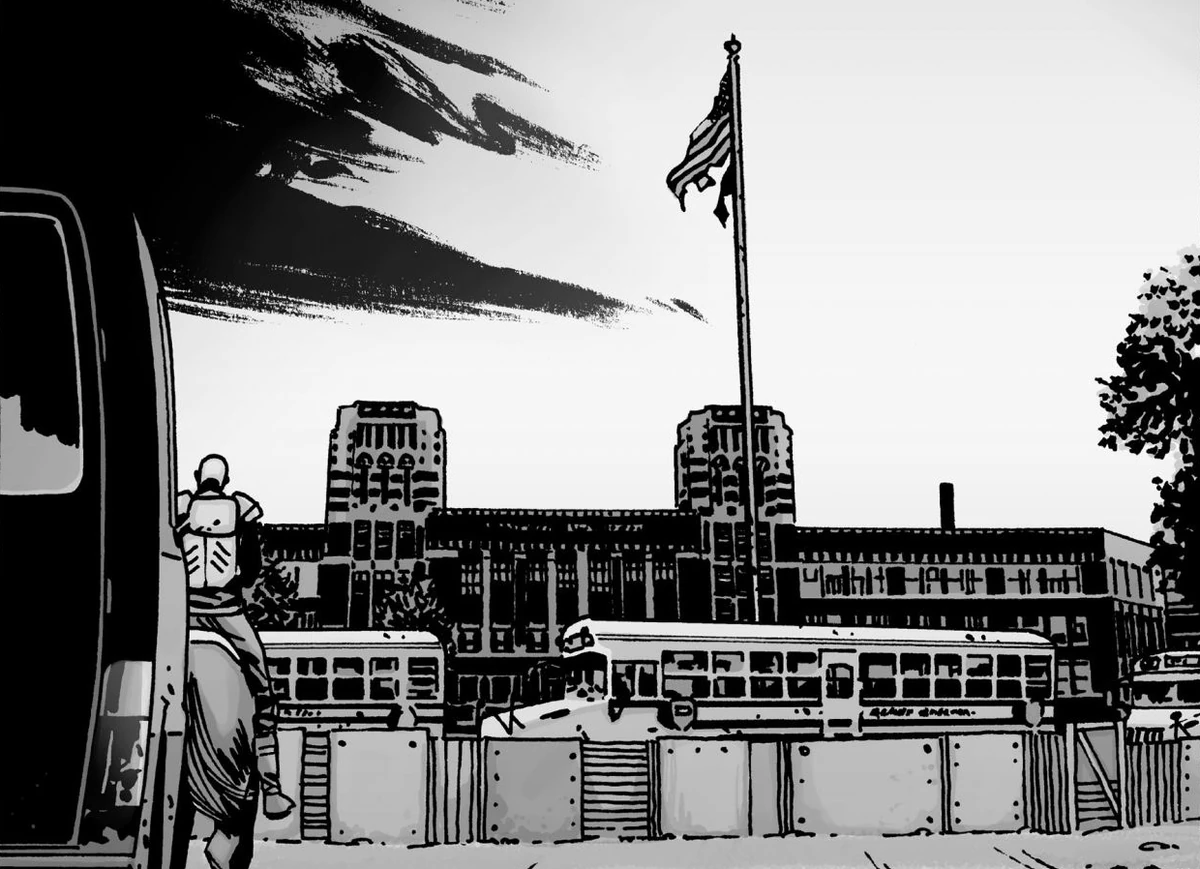
Built around a high school, the Kingdom are the only community in the D.C. area that seems to not be subjugated by the Saviors. This might in part be because of their leader, ‘King’ Ezekiel. A former theatre actor and zookeeper, he and his loyal pet tiger Shiva rule the Kingdom with a strong will and a soft hand. While most people know that Ezekiel is neither a king nor that he controls Shiva, people like to pretend as it makes for a compelling story.
The Kingdom joins the war against the Saviors, supplying horse cavalry and their large school busses. Not much happens until the Whisperers abduct king Ezekiel and put his head on a spike, causing the Kingdom to turn inward. Their new leader is a man named William, who keeps Ezekiel’s commitment to a unity between the communities. When the Hilltop is burned down, it is William and the Kingdom who come to their aid and help them rebuild.
The Whisperers
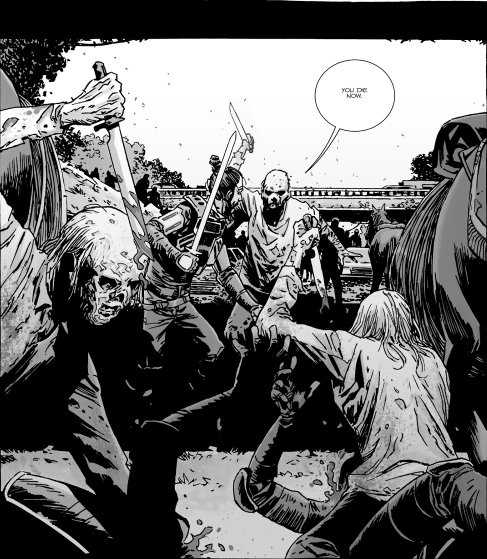
After order and some sort of security seems established in the D.C. area, a new group appears on the scene. The Whisperers, a nomadic group that can be charitably described as “Walker Herders” start appearing. First believed to be talking walkers, it is revealed that they drape themselves in masks, gloves and suits made from dried Walker skin. This unusual fashion style allows them to move among the Walkers unnoticed so long as they play the part, i.e. be quiet, walk slowly and not draw attention to oneself.
A group with such unsavory camo practices obviously comes with a rather morbid ideology. The belief of the group leaders ‘Alpha’ and ‘Beta’ shows the twisted view of society. They shed their ‘morality’ and live as animals would. This means people who cannot fend for themselves or say, women who can’t fight off assailants are to blame for it and no protection is granted.
They are also highly territorial, going so far as to abduct and behead multiple members of the communities, putting their heads on spikes as a marker of their border. To back their relatively few numbers and open lack of weapons beyond knives and bows, they shepherd an enormous horde of Walkers with them, numbering in the thousands. Their cruel acts of murder only stir the communities’ fighting spirit and an army is formed. This leads to the Whisperer War, a messy affair that ends in Hilltop being burned down, Negan redeemed and the Whisperers, bar a handful, being annihilated.
The Commonwealth
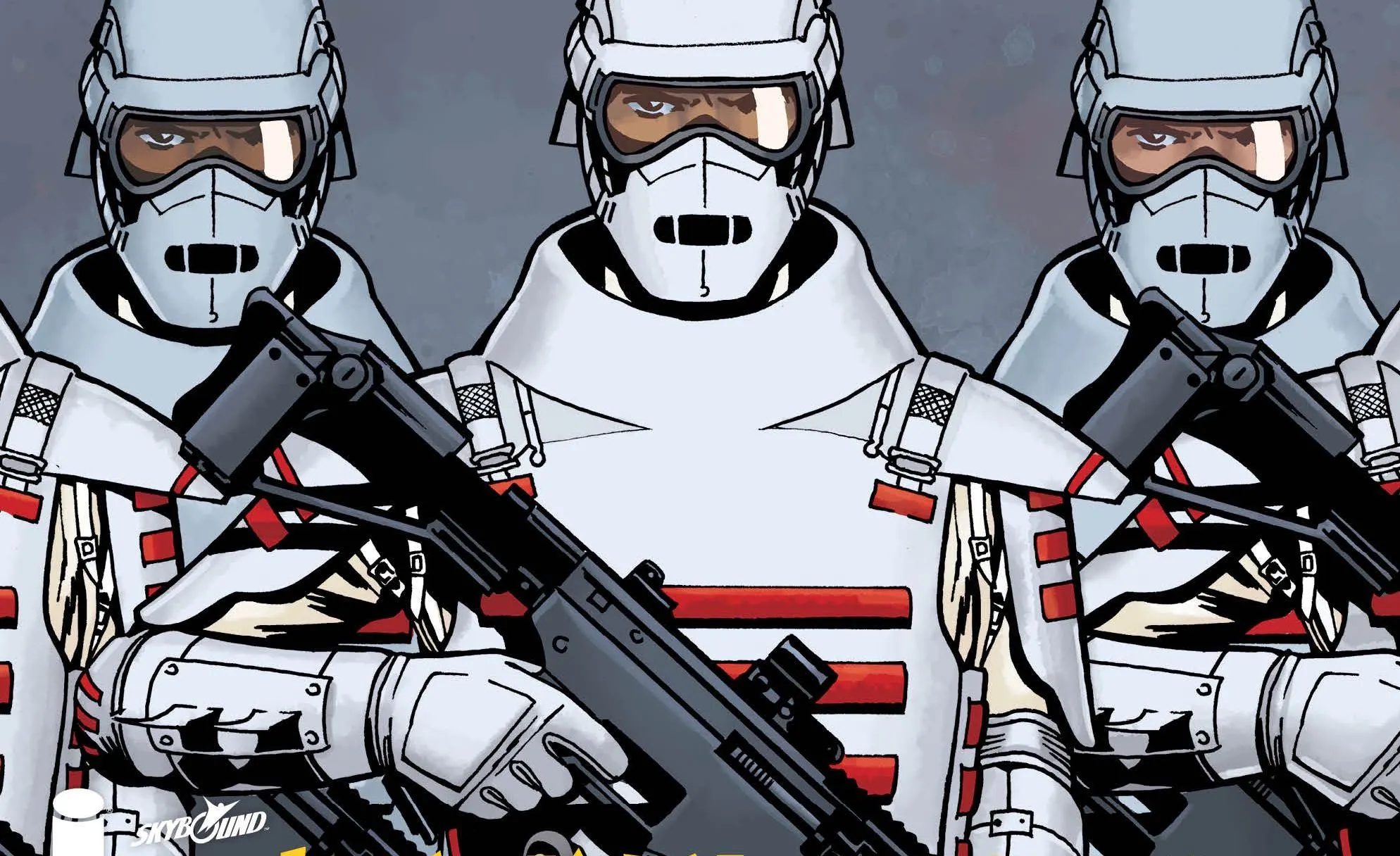
The last group encountered in the story is the Commonwealth. They are the seemingly only successful government project to preserve some kind of society. They are situated in Ohio, but seem to be an even larger network of cities and towns. They are shown to be even more organized than the communities of D.C., manufacturing plastic body armor for their soldiers, having proper safezones, well established governmental systems and administrations.
Rick’s group soon finds out that they run things based on the way the old world was ordered. They reproduce the power structures and social hierarchies of the old world. Michonne, being a former Lawyer is immediately given a penthouse, just based on her prestigious position in the pre-apocalypse. This obviously clashes with the way the D.C. communities are run, based on mutual support and working towards the common good for everyone. Things do become tense and an open rebellion of the Commonwealth’s populace is barely averted. Open war is avoided and the communities link up, spelling the final victory over the Walkers and establishing a new world that lasts.
The Walkers
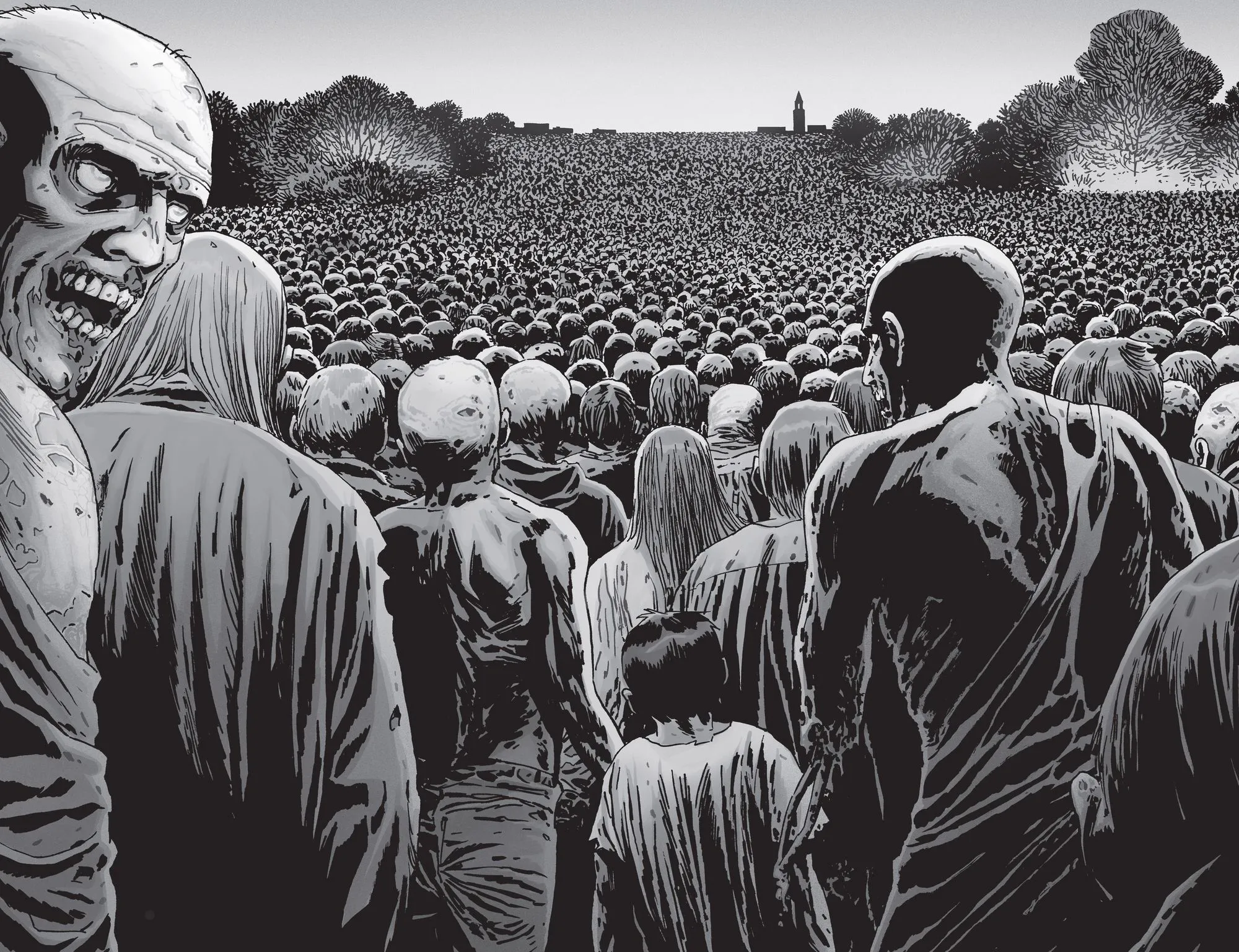
The common denominator across the entire story, the Walkers, Biters, Munchers, Roamers, whatever you call them are the ever looming threat, the reason for everything. Some people they force to adapt to the new reality, other people they give an excuse to indulge in their worst impulses. At the end of the day they have no inner workings, their actions are not ruled by ideology, beliefs or strategy.
They follow a rudimentary list of impulses: smells, noise and touch. We also know precious little of what caused the dead to rise (although it’s semi-canon, that it was alien spores), but throughout the series we can observe some facts about the effects of the zombie virus, these are:
- Everyone is infected with the virus. Upon death, the virus begins the transformation. The time varies, but eventually a deceased comes back to unlife.
- When a Walker bites somebody and breaks the skin, affected people seem to experience a sepsis. It’s never openly named, but the symptoms check out: strong fever, nausea and lethargy. Combined with the fact that the bites are 100% lethal and sepsis treatment is kind of difficult in the post apocalypse, it seems the most likely.
- Walkers have a semi-reliable sense of smell, being fooled by the smell of other walkers, something being fundamental to the Whisperers’ way of life.
- Despite muscles decaying, they retain enough strength in their jaws to break skin.
The World After
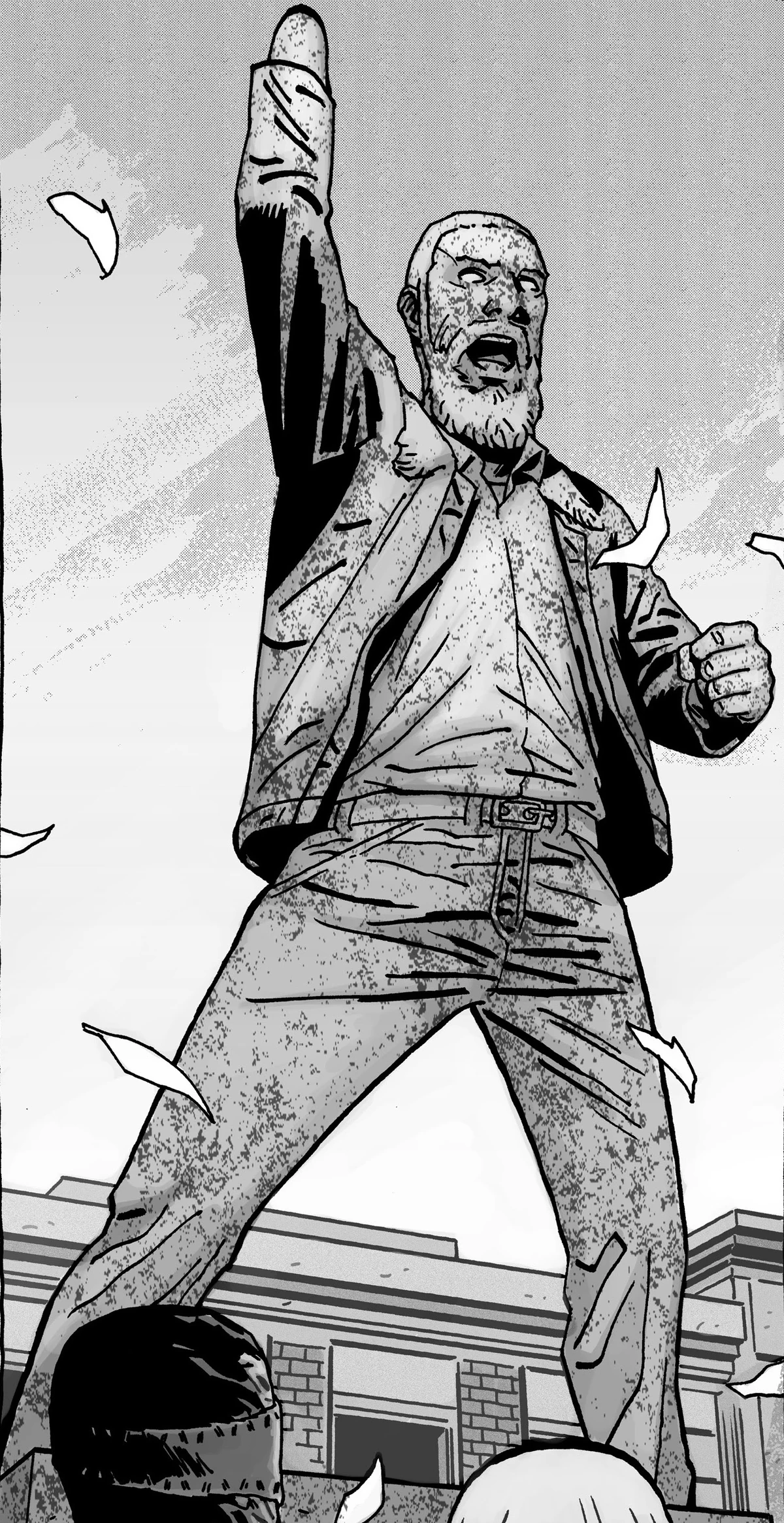
The last issue of TWD is set many many years after the series. We get a glimpse at a reformed world, there is structure and safety again. Walkers are viewed as so harmless that we see Maggie’s son showing them off like wild animals in a cage. The world hasn’t gone back to what it was, horses still seem like the preferred mode of travel, but the railroad is making a comeback under the instructions of Eugene.
Some form of government has been reestablished with Maggie as its president. The overall picture is one of victory. Humanity survived and is thriving again. This was in stark contrast to what Robert Kirkman (the author) originally planned; he wanted to paint a picture of a society rebuilt but then being destroyed regardless. But with so many post-apocalyptic stories, that would be a way too pessimistic view of humanity.
Humans will do cruel things in situations of hardship, people will be horrible, selfish and unreliable. But in the end, we are a social species, community is how we survived into the modern age and it is how we survive the zombie apocalypse. By choosing this positive ending over his original idea, Kirkman is fighting against the notion, that humans are inherently evil. We are shaped by our circumstances and the world around us, if we build towards a better world, we will become better people.
Have any questions or feedback? Drop us a note in the comments below or email us at contact@goonhammer.com. Want articles like this linked in your inbox every Monday morning? Sign up for our newsletter. And don’t forget that you can support us on Patreon for backer rewards like early video content, Administratum access, an ad-free experience on our website and more.


